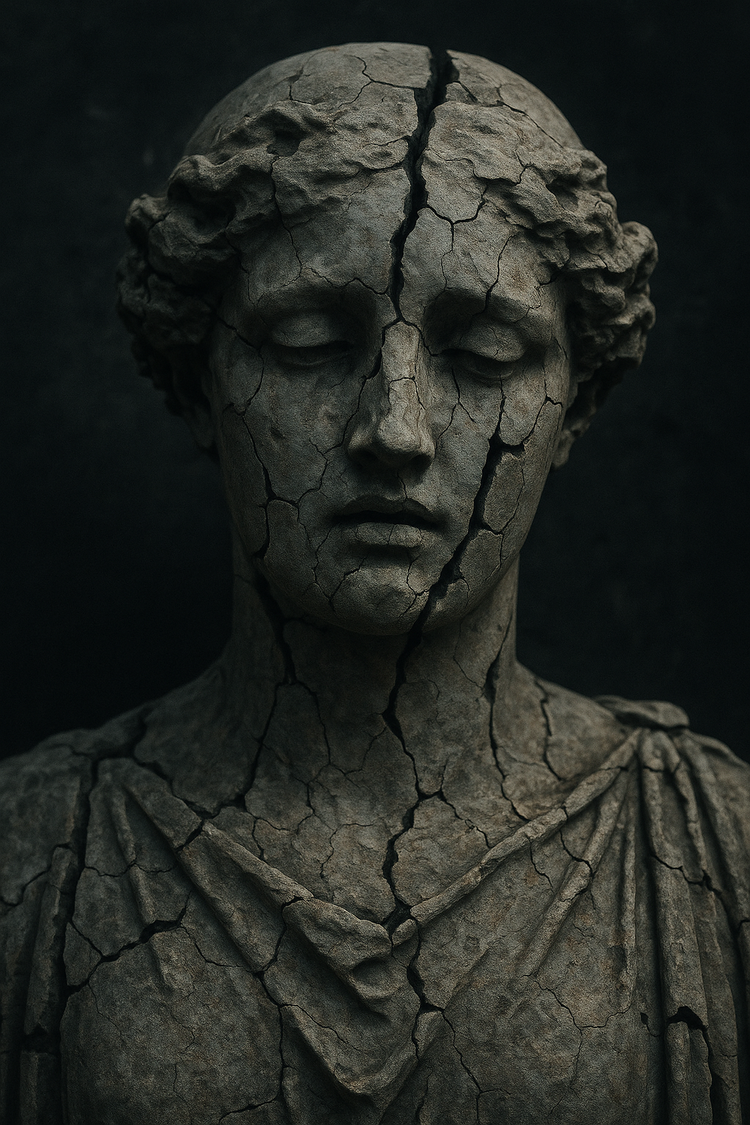The Storm And The Stone
Post Summary: A reflective comparison of two women who lived in the same era but received vastly different recognition — raising questions about memory, merit, and who history chooses to celebrate.
The Storm and the Stone: How History Chooses Its Heroines
Two women, one century, and the stories we choose to tell.

I never set out to compare Grace Darling and Mary Anning. It happened by accident—over coffee, as these things often do. A friend mentioned a recent visit to the area where Grace Darling and her father famously rowed out into a storm to rescue survivors from a shipwreck. Most people know that story. Statues were built. Paintings created. She became a national symbol of bravery almost overnight.
It got me thinking.
Not long after, I remembered Mary Anning—one of the most remarkable fossil hunters and scientific minds of her time. Unlike Grace, Mary didn’t become a household name. During her lifetime, her work was often ignored, misattributed, or quietly absorbed into the reputations of male scientists. And yet, she and Grace were contemporaries. They walked the same world, breathed the same air. One was celebrated. The other overlooked.
And I found myself asking: why? Why does a storm capture the imagination, while a stone that reshapes science is allowed to weather in silence?
A Storm Worth Printing

Grace Darling’s rescue of the Forfarshire survivors in September 1838 filled the newspapers. The Spectator called her “a fine young woman of twenty-two… who, at extreme risk, succeeded in rescuing nine persons from the wreck.” Within months, plays and poems were being written about her. Dramatic seas gripped the public imagination—and helped make Grace’s story headline news.

One London theatre even staged a melodrama where Grace was turned into a character who commits homicide—a distortion so absurd that the Spectator called it “a gross impropriety, and a profanation of a noble action.” Grace’s story had everything the press loved: danger, heroism, and a woman doing what most men wouldn’t dare. Her father was there too, of course—but that’s not what made the story memorable.
A Stone Left Unturned

Mary’s story unfolded differently. She didn’t seek headlines. She spent her life combing the Lyme Regis cliffs, quietly uncovering some of the most important fossils in history. In January 1823, the Bristol Mirror praised her as “this persevering female [who] has for years gone daily in search of fossil remains of importance at every tide… at the continual risk of being crushed by half suspended fragments.”

That danger wasn’t abstract. She once narrowly escaped a rockfall that killed her dog, Tray—her only companion on those long, windswept hunts. Still, she returned to the cliffs, again and again.
I imagine her there, silhouette against the grey sea, basket in hand, hammer tucked into her apron. The wind pulling at her shawl. The tide out. Her eyes scanning the stone not for spectacle, but for truth.
Yet despite praise like that, Mary never became a national symbol. She wasn’t wealthy. She wasn’t male. And she didn’t have the institutional backing to defend her place in science. Even when she published a letter in the Magazine of Natural History in 1839—one of the very few pieces we have in her own words—it went largely unnoticed.
The Pattern That Persists
The contrast between Grace and Mary is striking, but it isn’t unusual. We see this again and again. Rosalind Franklin’s Photo 51 was central to discovering the structure of DNA, and yet it was Watson and Crick who got the Nobel credit. Extraordinary contributions, quietly erased or minimized when they come from the “wrong” kind of person.

And when women are remembered, it is often only when they behave like the men history already celebrates. We remember Boudicca because she defied the Romans. Elizabeth I because she “spoke like a king.” Grace Darling because she rowed into a storm.
Even now, women’s names are almost always framed in relation to men: Grace Darling, daughter of William Darling, lighthouse keeper. Mary Anning, daughter of a cabinet maker. Rarely are men introduced as someone’s son or husband. The distinction is subtle, but it runs deep.

Reading the words printed at the time makes the contrast stark: one story amplified into spectacle; the other allowed to fade into footnotes.
For me, those 19th-century clippings show how little has changed. Grace was sensationalised until her courage blurred into melodrama. Mary was sidelined until her name barely appeared at all. It’s hard not to miss the modern parallel: media still bends or ignores stories to fit what sells, while quieter work—the kind that changes how we understand the world—often struggles for attention.
That’s why Equality Without Distinction matters. It isn’t about erasing names or faces. It’s about removing the conditions that decide whose name we remember in the first place—so that forgotten women in history and other erased voices aren’t left to the margins.
Grace rowed into a storm. Mary dug through stone. Both left a legacy. But only one was celebrated in her time. And that says more about us than it does about them.
Further Reading
History & Equality – The Author’s Voice explores the stories society left behind.
Before you go, ask yourself: whose names are carved in stone where you live — and whose were washed away?
If you value deeper perspectives on gender, power, and the past — or read the book.

